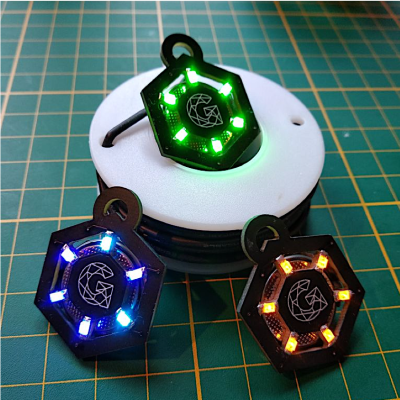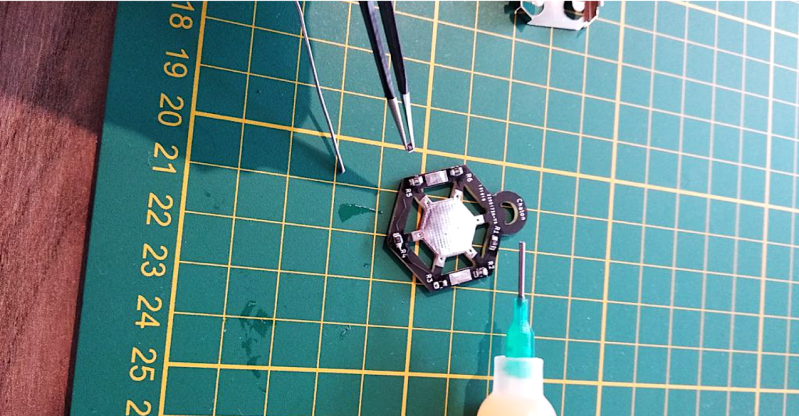[Gautchh] wanted to make something nice for his girlfriend. Being the DIY enthusiast he is, he thought a hand-made gift would resonate with her better than something he could pick up from the store. Enter NeckLight, a glow in the dark PCB necklace. He was first inspired by another project he ran across on Instructables, then decided to put his own little spin on the design. It’s cool how that works. Interestingly enough, it was his first time using Fusion 360, but you probably wouldn’t know that if you took a look at the results.

Aside from soldering, the trickiest part of this project was trying to get the LED intensities just right. [Gautchh] found the best way to do this was experimentally by testing each LED color with a series of resistors. He wanted to ensure he could get the color intensity and the LED current just right. Finally, with a touch of acetone, he was done (though he might want to try some alternatives to acetone next time).
[Gautchh] also thinks that this project would be a really nice way for beginners to learn surface mount (SMD) soldering. We’ve seen a few cool SMD LED projects before. Who could forget those competitive soldering challenges over at DEF CON?
Anyway. Thanks, [Gautchh]. We hope your girlfriend, and your dog, enjoyed their gifts.















The top picture is Tony Stark’s dog!
Boney Bark
Iron Mutt
More pictures of the dog please!
Well, this escalates quickly…
Nice!
The cuts show very sharp corners. PCB suppliers usually advertise that they use Ø2mm cutters as standard. Did you request the use of a particular milling cutter diameter, at extra cost, or did you simply send a file with sharp angles?
Thanks!
Hi Mark, you probably want to ask this question on the project’s Instructables page so the author can see it.
https://www.instructables.com/id/NeckLight-a-PCB-Necklace-for-Humans-and-Dogs/
From the pictures on the instructable page they used a 1mm router bit. They have smaller than the standard 2mm router in most machines to make slots for connectors anyway. At least USB and other metal shielded coneectors that are a little bit more rugged require small slots (0.5 to 0.8mm usually) in the PCB, so this is a pretty standard operation in most of the larger PCB fabs… Some charge you extra for milling these tiny slots, but i that really depends on the supplyer.
How ever, i’m not surprised at all that the project designer did not even consider this issue in his design at all. Not every “Maker” is a decent electronics engineer, and most circuits and pcb designs on pages like instructables confirm that, unfortunately.